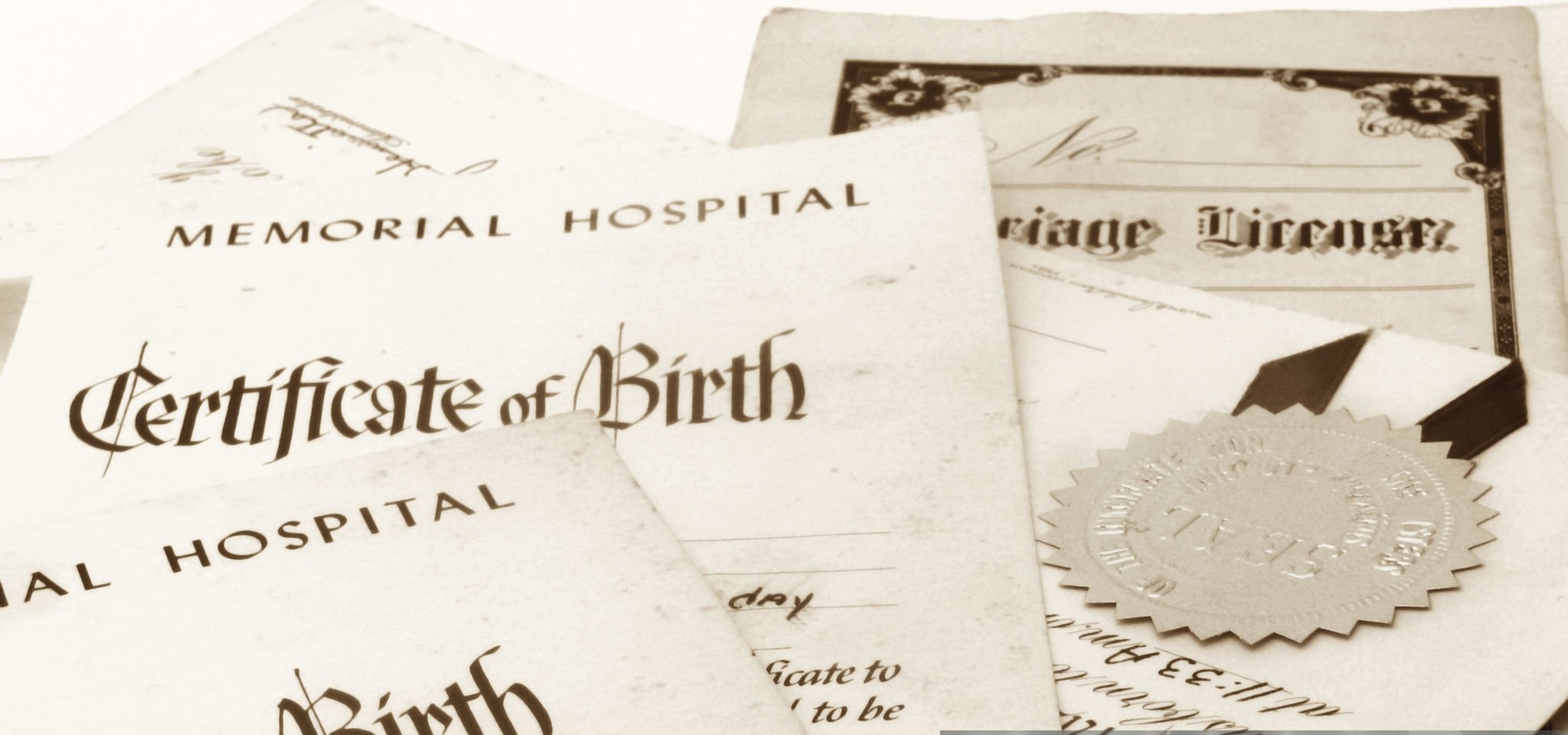What Is a Birth Certificate?
A birth certificate is the very first and most essential civil status document in a person’s life. It is an official record issued by a competent authority (typically the People’s Committee of the commune/ward where the person was born) to certify a person’s birth. It usually contains:
- Full name of the person
- Date of birth
- Gender
- Place of origin
- Nationality
- Parents’ full names
- Place of birth registration
- Date of registration
- Birth registration number
The birth certificate is a foundational legal document used to obtain other essential papers such as ID cards, passports, household registration books, school records, medical records, and social insurance. Proper storage and correct use of the birth certificate are therefore critical.
Why Do You Need to Translate a Birth Certificate?
In many cases, a birth certificate needs to be translated either into a foreign language or into Vietnamese for legal and administrative purposes. Common situations include:
a. Studying abroad or applying for scholarships
Foreign schools often require personal documents to be submitted in their native language. A birth certificate is a mandatory document to confirm identity, nationality, and family background.
b. Marriage with a foreign national
To register a marriage with a foreigner or get married abroad, you must provide accurate legal proof of identity. A translated and notarized birth certificate is usually required for the legal process.
c. Applying for citizenship, residency, or immigration
When applying for residency or a new nationality abroad, the government of the host country needs to verify your background. The birth certificate is a crucial part of this verification process.
d. Sponsoring family members
When sponsoring your spouse, children, or other family members to move abroad, a translated birth certificate is used to prove biological or legal relationships.
e. Other legal or administrative purposes
Such as opening an international bank account, applying for a long-term visa, or seeking employment abroad—many of these require a properly translated and certified birth certificate.
What Are the Requirements for Translating a Birth Certificate?
a. Absolute accuracy
A birth certificate is a legal document. Any mistake, omission, or excess information in the translation can lead to serious consequences—such as your application being rejected, suspected forgery, or unnecessary delays. Even minor errors in spelling, dates, or titles can be problematic.
b. Correct formatting and structure
A translated birth certificate should mirror the format of the original, including:
- Title (“Giấy khai sinh” → “Birth Certificate”)
- All fields presented in correct order
- Proper punctuation, tables, and line formatting (if applicable)
Professional translations are usually formatted to look similar to the original to allow easy comparison and verification.
c. Language and legal terminology
Translation should match the language and legal expectations of the receiving country. This includes:
- Appropriate legal vocabulary (e.g., “People’s Committee” vs. “Commune-level People’s Committee”)
- Date formatting conventions (e.g., 20/01/1998 → January 20th, 1998 or 1998-01-20)
d. Qualified translators or certified agencies
Translations should be carried out by:
- Experienced professionals
- People familiar with legal documents and terminology
- Agencies with a proven track record working with international authorities (embassies, consulates, foreign immigration departments, etc.)
Some countries only accept translations from certified translators or licensed translation agencies.
Format and Structure of a Translated Birth Certificate
A properly translated birth certificate typically includes:
a. Full Content Translation
- Includes key information: full name, date of birth, parent information, informant details, etc.
- All stamps, signatures, official position seals, etc. appearing on the document must be translated. If the document is a certified copy, the certification stamp must also be fully translated.
- Back side (if applicable): Normally, only the front side of the birth certificate containing the main information needs to be translated. However, if a full translation is required, the back side (which typically contains amendments to the birth certificate) can also be translated.
- Any handwritten notes (if present) must also be translated.
b. Formatting Non-Text Elements
- Examples: logos, national emblems, handwritten signatures, stamps, etc.
- According to translation formatting regulations, it is not permitted to copy and paste (e.g., snapshots) elements such as signatures or stamps into the translation. Instead, these must be represented in text format as: [signed], [signed and stamped], [national emblem], [logo], etc.
c. Consistent and Clear Presentation
- Use professional fonts (e.g., Arial, Times New Roman)
- Font size should be easy to read (12 or larger)
- No erasures or strikethroughs allowed
- Do not insert any information not present in the original document
Legalizing or Notarizing the Translated Birth Certificate
After translation, most institutions (schools, embassies, government agencies) require the translated birth certificate to be notarized to confirm its legal authenticity. There are two common methods:
After completing the translation, most organizations, embassies, schools, and government agencies require the translation to be notarized/certified for legal validity. There are two common methods:
a. Translation notarized at a Notary Office
- The translator must be a registered collaborator at the Notary Office
- The translation is certified by a notary public
- Accompanied by a notarized copy of the original birth certificate
- Notarized translations usually carry higher legal value and are more widely accepted
b. Translation certified by the District-level Justice Office
- Suitable when translating from a foreign language into Vietnamese
- Certification is carried out by the District People’s Committee
- The translator must sign a declaration taking responsibility for the translation content
c. Format for Notarized/Certified Translations
- The notarized translation package is assembled in the following order: (1) the translated document → (2) the declaration page by the translator and notary public → (3) the notarized copy of the original document
- In addition to the number of copies requested, the Notary Office/Justice Office may require one extra copy for filing purposes.
Key Notes and Cautions
a. Do not use machine translation
Google Translate or AI tools are helpful for rough understanding, but not for official use. Never submit a machine-generated translation for legal purposes.
b. Double-check personal information
Even a small mistake in names, dates, or parents’ details can cause delays or rejections. Carefully compare the translated text with the original before notarizing.
c. Proper treatment of names
Personal names should not be translated. Do not replace “Nguyễn Văn A” with “John A” or transliterate unnecessarily. Names should be kept in their original form.
d. Some countries require consular legalization
For use abroad, some jurisdictions require consular legalization or apostille of the translation to confirm its authenticity and legality.
This process includes:
- Translating and notarizing the document
- Having it verified by the Ministry of Foreign Affairs (MOFA) or Department of Foreign Affairs
- Getting consular authentication from the embassy/consulate of the receiving country
e. Make multiple notarized copies
Notarization fees are relatively low, so it’s smart to request two or three copies at once in case you need extras in the future.
Translating a birth certificate may seem simple but requires attention to detail, legal knowledge, and professional handling. A properly translated and notarized document will help you avoid unnecessary issues and speed up important processes like studying abroad, marriage registration, immigration, and more.
If you’re unsure about doing it yourself, seek help from a reputable translation agency and verify the specific requirements of the institution or country you are submitting the document to.
📞 Hotline: 024 73009800
📧 Email: [email protected]
📱Zalo/Viber / Whatsapp: 0838789800
🌐 Service: Notarized Translation
🏢 Địa chỉ: 1F, GTC Building, 115 Le Duan, Hoan Kiem, Hanoi

